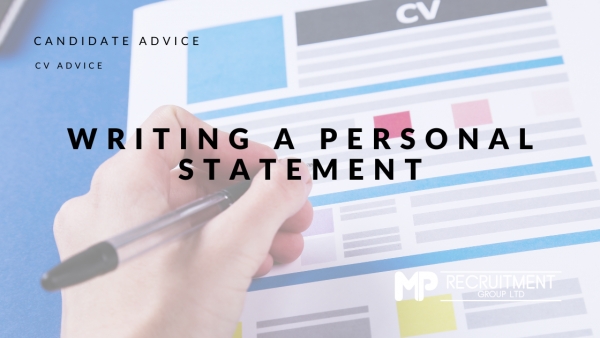WRITING A PERSONAL STATEMENT

The personal statement is usually found at the top of a CV, so it’s the first thing that a prospective hirer will see when they read through your CV. If your personal statement isn’t up to scratch, or isn’t there at all, it might be the difference between a recruiter reading your CV or rejecting it.
WHAT IS A PERSONAL STATEMENT?
The purpose of a personal statement is to sell yourself to the reader, it’s a brief personal summary given to prospective employers to help you stand apart from the competition. It’s usually the first section of your CV after your contact details, so should be used to make an instant impact to the hirer. A Personal Statement should let a prospective employer know who you are, what you can offer and what your career goals are.
KEEP IT CONCISE
Ideally, your personal statement should be no more than around three or four sentences, any more than this and you run the risk of rambling and taking up valuable space. You should remember that it’s a summary, so keep it concise and to the point. You can use a Cover Letter and the rest of your CV to go into details.
MAKE IT SPECIFIC
Like your CV and Cover Letter, you should make your personal statement to the job or company you are applying for. Use the job description as inspiration to hit the key points that the employer is looking for. A personal statement should be brief, so you don’t want to waste your words, make sure what you write adds value.





